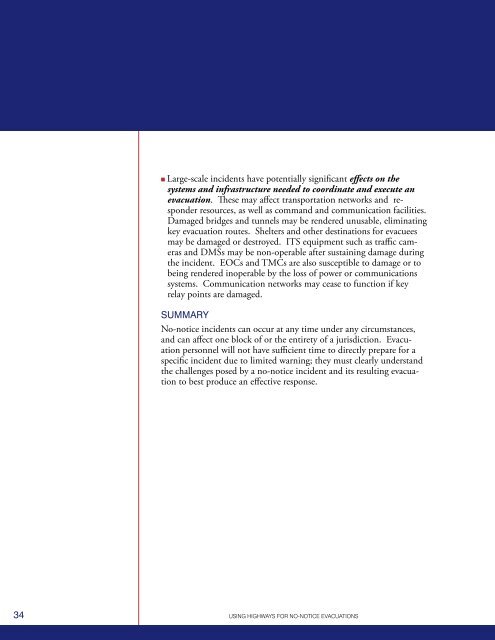using highways for no-notice evacuations - FHWA Operations - U.S. ...
using highways for no-notice evacuations - FHWA Operations - U.S. ...
using highways for no-notice evacuations - FHWA Operations - U.S. ...
Create successful ePaper yourself
Turn your PDF publications into a flip-book with our unique Google optimized e-Paper software.
n Large-scale incidents have potentially significant effects on thesystems and infrastructure needed to coordinate and execute anevacuation. These may affect transportation networks and responderresources, as well as command and communication facilities.Damaged bridges and tunnels may be rendered unusable, eliminatingkey evacuation routes. Shelters and other destinations <strong>for</strong> evacueesmay be damaged or destroyed. ITS equipment such as traffic camerasand DMSs may be <strong>no</strong>n-operable after sustaining damage duringthe incident. EOCs and TMCs are also susceptible to damage or tobeing rendered i<strong>no</strong>perable by the loss of power or communicationssystems. Communication networks may cease to function if keyrelay points are damaged.SUMMARYNo-<strong>no</strong>tice incidents can occur at any time under any circumstances,and can affect one block of or the entirety of a jurisdiction. Evacuationpersonnel will <strong>no</strong>t have sufficient time to directly prepare <strong>for</strong> aspecific incident due to limited warning; they must clearly understandthe challenges posed by a <strong>no</strong>-<strong>no</strong>tice incident and its resulting evacuationto best produce an effective response.34 USING HIGHWAYS FOR NO-NOTICE EVACUATIONS
















